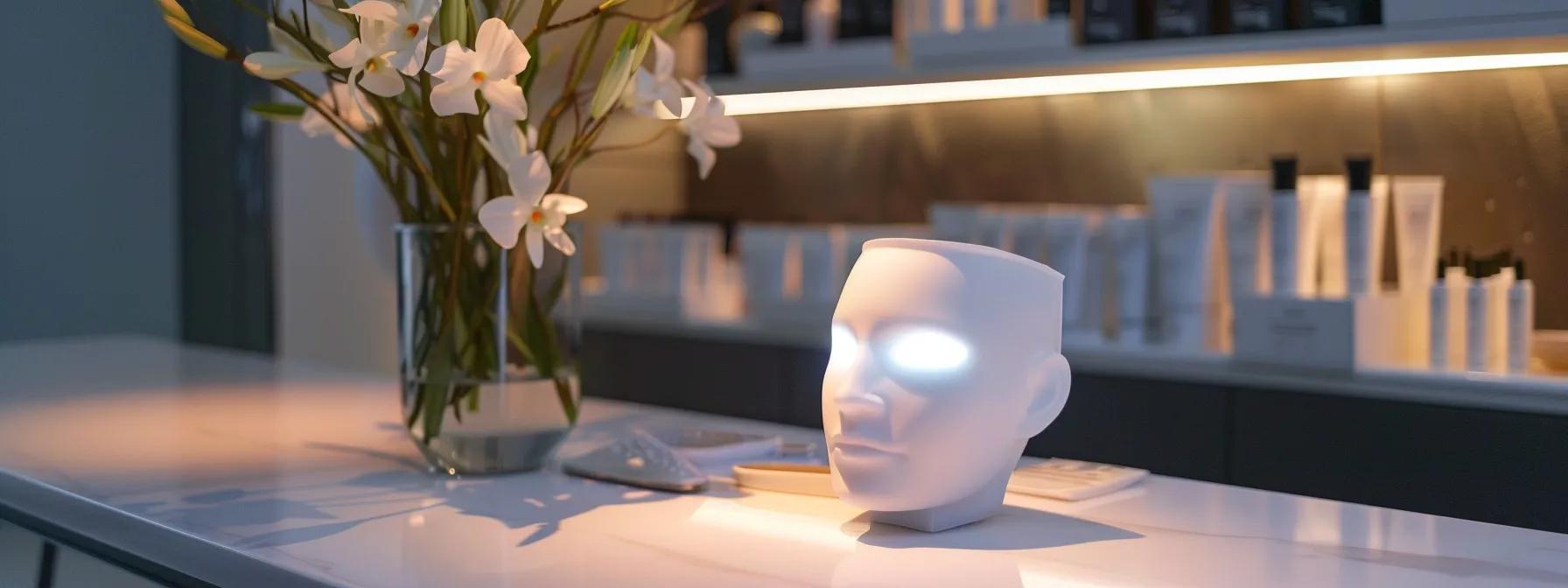
Table Of Contents:
- Understanding LED Face Mask Prices: What to Expect for Quality Options in 2025
- Deciphering the Price Range for LED Face Masks Today
- Key Factors That Influence the Cost of a Quality LED Face Mask
- What Level of Quality Can You Anticipate at Various LED Mask Price Points
- Identifying True Value When Selecting Your LED Face Mask
- Budgeting for Your LED Face Mask Purchase in 2025
- Determining How Much to Pay for an LED Face Mask Suited to Your Needs
- Table: Comparative Overview of LED Face Mask Price Ranges
- Final Thoughts
- Frequently Asked Questions
Understanding LED Face Mask Prices: What to Expect for Quality Options in 2023
LED face masks have become a staple in at-home skincare routines, offering salon-quality light therapy to address wrinkles, acne, and dullness. As consumers seek non-invasive treatments to boost skin radiance and promote cellular regeneration, understanding the price structure of these devices is essential. In this context, insights from scandinavianbiohacker can guide buyers toward finding devices that truly deliver. This article breaks down the LED face mask market in 2025 by examining pricing tiers, cost-driving factors, and the value delivered by each segment. By discussing treatment modes, material quality, certification status, and brand reputation, readers can make informed decisions when budgeting for an LED mask. Detailed tables and data-backed explanations help guide those looking to invest in quality LED light therapy solutions. In a landscape where cosmetic technology merges with skincare science, Scandinavian Biohacker leads by offering professional-grade treatments at home. Additional perspectives from scandinavianbiohacker further highlight the differences between entry-level options and high-end devices, comparing affordability with long-term skincare outcomes.
Transitioning from the basics, we now examine LED face mask pricing boundaries in the current market landscape.
Deciphering the Price Range for LED Face Masks Today
The LED face mask market is broadly divided into three tiers—low-end, mid-range, and premium—each catering to varying consumer needs and skin treatment goals. Low-end products provide basic LED therapy modes that address surface-level concerns with moderate efficacy. Mid-range devices build on these by offering multiple wavelengths and added functionalities aimed at improving skin tone and reducing inflammation. Premium LED masks feature advanced technology with greater power density, extra treatment modes, and innovative features for users with specific skincare needs and higher performance expectations.
Pricing is influenced not only by technological sophistication but also by factors like certifications, safety, and brand legacy. Devices with FDA clearance and rigorous clinical testing command higher prices for their proven safety and consistent performance on human skin. The use of materials like medical-grade silicon and durable polymers enhances longevity and absorption efficiency, further driving costs. Higher-priced models reflect heavier investments in research and development, promising visible improvements in pigmentation, wrinkles, and overall dermal rejuvenation.
Key Factors That Influence the Cost of a Quality LED Face Mask

Several elements contribute to the final retail price of LED face masks:
The Number and Type of LED Lights Affecting Price
The technology inside the mask is a primary cost driver. Entry-level models may include a few standard LEDs that emit basic red or blue wavelengths. In contrast, advanced models combine red, blue, near-infrared, and sometimes purple or amber lights. These extra wavelengths target specific skin concerns—stimulating collagen production to reduce wrinkles or delivering antibacterial effects to combat acne. A greater number and variety of LEDs provide a broader range of treatment effects, justifying a higher investment.
FDA Clearance and Safety Certifications Impact on Mask Cost
Quality LED masks undergo rigorous safety testing and obtain FDA clearance through stringent clinical trials and documentation. Masks with such certifications guarantee proven efficacy and minimal risk of side effects. This added assurance increases manufacturing costs, but also builds consumer trust and treatment reliability.
Material Quality and Durability Considerations in Pricing
The use of high-grade, durable materials like medical-grade silicone and robust housing substantially impacts price. Premium masks incorporate advanced design features that improve skin contact and light energy delivery to the dermis. In contrast, cheaper alternatives often rely on low-quality plastics, which may compromise performance and comfort over time. Thus, material quality affects both treatment outcomes and product longevity.
Brand Reputation and Research Investment Reflected in Price
A trusted brand is a key indicator of quality. Companies like Scandinavian Biohacker have established strong reputations through continuous research, innovation, and clinical validation. Heavy investments in R&D and robust customer support justify premium price tags, as consumers are assured of reliable performance and lasting benefits.
Specific Treatment Modes and Wavelength Options Driving Cost
The versatility of treatment modes significantly influences the price. Masks offering multiple programs to address hyperpigmentation, inflammation, dermal regeneration, and enhanced fibroblast activity require sophisticated circuitry and specialized LED configurations. The addition of customizable settings, digital interfaces, and wireless connectivity further enhances product complexity and cost.
What Level of Quality Can You Anticipate at Various LED Mask Price Points
Price often correlates with device performance and skincare outcomes:
Assessing Entry-Level Mask Performance and Longevity
Entry-level masks fall in the lower pricing bracket and offer basic skin treatment benefits such as reduced inflammation and improved brightness. They typically use fewer LED lights with less power and simple circuitry, which may limit extended or customizable use. These models are ideal for beginners or users with mild skin concerns but might not deliver the longevity or comprehensive results needed as treatment demands grow.
Evaluating Mid-Tier Masks for Balanced Efficacy and Value
Mid-range masks strike a balance between affordability and advanced functionality. They often incorporate multiple wavelengths (red, blue, near-infrared) to stimulate collagen production, reduce photoaging, and balance skin tone. With better build quality and moderate power density, these masks provide measurable improvements while maintaining user-friendly interfaces and customizable intensities. They are suitable for regular use and for consumers seeking tangible results without premium pricing.
Determining if High-End Masks Justify Their Price Tag
Premium LED masks are built for users with significant skincare concerns such as deep-set wrinkles, persistent hyperpigmentation, or advanced skin regeneration needs. They include cutting-edge LED technology, superior power density, and a wide range of treatment modes along with wireless, user-controlled adjustments. High-quality materials ensure optimized skin contact and efficient light absorption. Clinical trials often back these devices by demonstrating measurable improvements in collagen synthesis and overall skin texture within weeks. Their advanced connectivity and aesthetic design add a luxury appeal that justifies the higher investment.
Correlating Price With Expected Skincare Outcomes
Ultimately, the mask’s price closely aligns with the benefits it offers. Lower-cost models may suit general skin maintenance, while premium devices deliver transformative results. Investing in a high-end LED mask can be seen as equivalent to at-home professional treatments, providing fast and noticeable improvements in conditions like acne, photoaging, and uneven skin tone.
Identifying True Value When Selecting Your LED Face Mask

True value in an LED face mask is determined by more than just the initial price tag; it requires evaluating long-term benefits, warranty terms, customer support, and available clinical evidence. A quality mask is a long-term investment in skin wellness.
Looking Beyond the Initial Price for Long-Term Benefits
While a lower-priced mask might seem appealing upfront, potential drawbacks such as inferior materials and limited functionalities can lead to additional expenses over time. In contrast, a higher initial investment might deliver sustained improvements through robust construction and consistent performance, ultimately reducing future skincare costs.
Comparing At-Home LED Mask Costs to Professional Treatment Prices
For many, a quality at-home LED mask offers a cost-effective alternative to repeated professional treatments, which can be very expensive per session. Although premium masks may have a higher upfront cost, they yield gradual yet lasting results comparable to clinical treatments, saving money in the long term.
User Reviews and Clinical Evidence as Indicators of Value
Consumer reviews and clinical studies help gauge a mask’s effectiveness. Detailed clinical data, along with positive testimonials regarding improvements in brightness, radiance, and reduced wrinkles, bolster a mask’s value proposition. Transparent warranty policies and strong customer support further enhance long-term value.
Warranty and Customer Support Considerations for Your Investment
A long warranty and responsive customer service are hallmarks of a high-quality mask. These factors ensure that any operational issues are resolved quickly and that the mask continues to provide effective treatment over time, further justifying the cost.
Budgeting for Your LED Face Mask Purchase in 2023
Setting a realistic budget is critical when purchasing an LED face mask. Consumers should balance cost-effectiveness with quality based on their specific skincare needs.
Setting a Realistic Budget for a Quality LED Face Mask
Evaluate your skin concerns and the performance level you desire. Entry-level masks may be enough for basic needs, while more severe issues, like deep wrinkles or significant acne, might require higher-functioning, pricier models. A realistic budget should factor in the upfront cost along with any accessories or extended warranty options.
Recognizing Red Flags of Overpriced or Underperforming Masks
It is important to research specifications and reviews to avoid masks with insufficient LED power density, limited treatment modes, or a lack of FDA clearance. Red flags include a scarcity of transparent clinical testing and negative feedback on durability and performance.
Finding Quality Options Within Your Desired Price Range
Comparing models across various brands through consumer reviews and expert testimonials can help identify quality masks within your budget. Seasonal promotions, bundle deals, and financing plans often make premium masks more accessible.
Considering Financing or Payment Plans for Higher-Priced Masks
For those inclined toward premium masks but deterred by the high upfront cost, many companies now offer installment plans. This option makes it easier to access professional-grade treatments at home without compromising on quality.
Determining How Much to Pay for an LED Face Mask Suited to Your Needs

Deciding on the ideal price for an LED face mask involves aligning the device’s features with your specific skincare goals and budget.
Aligning Mask Features With Your Specific Skincare Goals
Consider which features are non-negotiable for your skin. For example, if combating chronic acne is a priority, choose a mask with potent blue light capabilities. For aging skin, a mask that stimulates collagen production using advanced red or near-infrared LEDs may be necessary. Matching features with your personal needs ensures that your investment directly targets your skin concerns.
Weighing Daily Use Convenience Against Mask Price
Daily use is a key factor. Masks that are comfortable, simple to operate, and designed for extended use can justify a slightly higher price. Ergonomic designs that fit facial contours well and incorporate wireless connectivity tend to promote compliance and consistent treatment, leading to enhanced results over time.
When Spending More on an LED Mask Makes Sense
For consumers with demanding skincare needs or those desiring at-home results comparable to professional treatments, spending more can be a practical choice. High-end devices reduce photodamage, boost collagen density, and often lower long-term skincare expenses by eliminating frequent spa visits.
Finding the Sweet Spot Between Affordability and Quality for Your LED Mask
Ultimately, the right mask balances cost with performance. Study product specifications, review clinical outcomes, and consider long-term usability. Comprehensive reviews and comparison tables can help pinpoint a mask that provides robust treatment without exceeding your budget.
Table: Comparative Overview of LED Face Mask Price Ranges
Below is a summary table comparing key attributes across different price tiers:
| Price Tier | LED Types & Modes | Key Certifications | Notable Features | Expected Outcomes |
|---|---|---|---|---|
| Low-End | Basic red/blue LEDs | Minimal certification | Simple design, basic functionality | Mild improvement in brightness |
| Mid-Range | Multiple wavelengths (red, blue, NIR) | FDA clearance common | Customizable intensity, durable design | Balanced effect on wrinkles and acne |
| Premium | Advanced multi-wavelength (red, blue, NIR, amber, etc.) | Full FDA & safety certifications | High power density, smart connectivity, ergonomic | Significant improvement in pigmentation, collagen, and overall skin texture |
Final Thoughts
Scandinavian Biohacker and other leading brands exemplify the evolving landscape of at-home LED light therapy. This article outlined the various price ranges, the factors influencing cost, and the value provided by each tier. Balancing affordability with advanced performance is crucial as consumers invest in effective solutions for aging, acne, and skin radiance. The right LED face mask aligns with an individual’s skincare needs while delivering long-lasting, proven results.
Frequently Asked Questions
Q: What determines the cost of an LED face mask? A: The cost is influenced by the number and types of LEDs used, FDA clearance, material quality, brand reputation, and available treatment modes. Premium models offer advanced features like multiple wavelengths and smart connectivity that justify their higher prices.
Q: How do premium LED masks compare to professional treatments? A: Premium LED face masks incorporate clinical-grade technology that stimulates collagen production and reduces pigmentation, offering results comparable to professional treatments at a lower long-term cost and with the convenience of home use.
Q: Is it necessary to invest in a high-priced LED mask? A: Not necessarily. Entry-level and mid-range masks can benefit basic skincare needs, such as reducing inflammation and enhancing brightness. However, users with deeper wrinkles or severe acne may benefit more from premium devices with advanced treatment modes.
Q: How do I know if an LED mask is of high quality? A: High-quality LED masks are supported by clinical evidence, FDA clearances, and strong customer reviews regarding durability and long-term performance. Detailed specifications, warranties, and supportive customer service are good indicators of quality.
Q: Can financing options help when purchasing a high-end LED mask? A: Yes. Many manufacturers offer financing or installment plans that allow consumers to spread the cost over several months, making premium devices more accessible without a large upfront investment.
Q: Do LED face masks work for all skin types? A: LED face masks are generally safe for most skin types, including sensitive skin. However, those with specific conditions, allergies, or very delicate skin should consult a dermatologist before use. Many masks offer adjustable settings to suit different sensitivities.
Q: How frequently should an LED face mask be used to see results? A: Consistency is key. Most users are advised to use the mask 2–3 times per week, and some high-end models even allow daily use at lower intensities. Typically, noticeable improvements occur after 6–12 weeks of consistent use.


Leave a comment
This site is protected by hCaptcha and the hCaptcha Privacy Policy and Terms of Service apply.